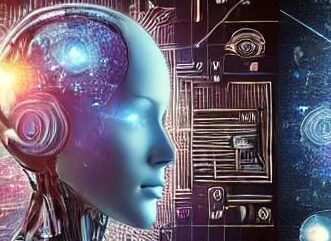Powering a Sustainable Future
Introduction: Energizing Innovation with AI
As the world moves toward cleaner and more efficient energy systems, Artificial Intelligence (AI) is becoming a cornerstone in the transformation of the energy sector. By optimizing energy production, managing consumption, and enabling renewable integration, AI is paving the way for a sustainable and resilient energy future.
In this installment of the AI Terminologies Series, we’ll explore how AI is reshaping the energy industry, its groundbreaking applications, and the challenges that come with integrating intelligent systems into energy ecosystems.
1. Optimizing Renewable Energy Production
AI’s Role:
AI improves the efficiency and reliability of renewable energy sources like solar and wind by analyzing real-time data and making predictions.
Applications:
- Solar Energy Optimization: AI predicts sunlight patterns to maximize solar panel output.
- Wind Energy Forecasting: AI models predict wind speeds to enhance turbine performance.
- Energy Storage Management: AI optimizes the charging and discharging cycles of batteries.
Example:
Google’s DeepMind uses AI to predict wind power output 36 hours in advance, increasing the value of wind energy by 20%.
2. Smart Grids and Energy Management
AI’s Role:
AI enables smarter electricity grids that dynamically balance supply and demand while integrating renewable energy sources.
Applications:
- Demand Response: AI adjusts power usage during peak hours to prevent grid overloads.
- Fault Detection: AI identifies and predicts grid failures, ensuring faster repairs.
- Load Forecasting: AI predicts energy consumption patterns for better grid management.
Example:
Siemens uses AI-powered smart grids to monitor and optimize electricity distribution in real-time.
3. Energy Efficiency in Buildings
AI’s Role:
AI helps reduce energy consumption in residential, commercial, and industrial buildings by optimizing heating, cooling, and lighting systems.
Applications:
- Smart Thermostats: AI learns user preferences and adjusts temperatures accordingly.
- Lighting Control: AI systems reduce energy usage by managing lighting based on occupancy.
- Energy Audits: AI analyzes building data to recommend energy-saving measures.
Example:
Nest Thermostats use AI to optimize HVAC systems, reducing energy bills for homeowners.
4. Predictive Maintenance for Energy Infrastructure
AI’s Role:
AI enhances the reliability of energy systems by predicting and preventing equipment failures.
Applications:
- Turbine Monitoring: AI detects wear and tear in wind turbines before they fail.
- Power Plant Maintenance: AI predicts issues in power generation equipment to minimize downtime.
- Grid Monitoring: AI analyzes data from sensors to identify potential weak points.
Example:
GE’s Predix platform uses AI to monitor and maintain industrial energy systems, reducing unplanned downtime.
5. Enhancing Energy Storage Solutions
AI’s Role:
AI optimizes the performance of energy storage systems, crucial for integrating intermittent renewable energy sources.
Applications:
- Battery Management Systems: AI predicts battery health and lifecycle.
- Energy Arbitrage: AI determines the best times to store and release energy based on market prices.
- Grid Stabilization: AI ensures stable energy supply during peak demand.
Example:
Tesla’s Powerwall uses AI to manage home energy storage, ensuring efficient use of solar power.
6. AI in Electric Vehicles (EVs)
AI’s Role:
AI supports the growth of electric vehicles by optimizing charging networks and improving vehicle performance.
Applications:
- Smart Charging Stations: AI schedules EV charging to reduce grid stress.
- Route Optimization: AI predicts charging needs based on routes and driving habits.
- Battery Performance: AI monitors and improves EV battery life.
Example:
AI-powered platforms like ChargePoint optimize EV charging infrastructure for better accessibility and efficiency.
7. AI in Energy Trading
AI’s Role:
AI analyzes market trends and automates trading decisions to optimize energy procurement and distribution.
Applications:
- Price Forecasting: AI predicts energy prices based on demand and supply trends.
- Automated Trading: AI executes trades for utilities and energy companies.
- Renewable Energy Certificates: AI tracks and trades green energy credits.
Example:
BP uses AI to optimize energy trading, increasing profits and reducing market risks.
Challenges of AI in Energy
- Data Quality and Availability:
- Ensuring high-quality, real-time data for AI systems to function effectively.
- Integration Costs:
- High initial investments in AI infrastructure.
- Cybersecurity Risks:
- Protecting energy systems from cyberattacks as they become more connected.
- Regulatory Barriers:
- Adapting AI solutions to varying regulations across regions.
Solutions:
- Collaborate with governments to create supportive policies.
- Invest in cybersecurity measures to protect AI-driven energy systems.
- Develop cost-effective AI tools for small and medium-sized energy providers.
Future Trends in AI for Energy
- Decentralized Energy Systems:
- AI will enable peer-to-peer energy trading in microgrids.
- Hybrid Energy Systems:
- AI will optimize the integration of multiple energy sources, such as solar, wind, and hydrogen.
- Carbon Footprint Tracking:
- AI will help businesses and consumers monitor and reduce their carbon emissions.
- Global Energy Forecasting:
- AI will provide real-time insights into global energy trends to guide policies and investments.
How Individuals Can Leverage AI for Energy Savings
- Adopt Smart Devices:
- Use AI-powered thermostats, lighting systems, and energy monitors.
- Optimize Energy Usage:
- Leverage apps that track and recommend ways to save energy.
- Switch to Renewable Energy:
- Use AI tools to manage solar panels or other renewable energy systems at home.
- Support Green Energy Initiatives:
- Advocate for AI-driven sustainable practices in your community.
Conclusion: Powering Progress with AI
AI is revolutionizing the energy sector, making it more efficient, sustainable, and resilient. By embracing AI-driven solutions, we can meet the growing demand for clean energy, reduce environmental impact, and build a more sustainable future for generations to come.
Stay tuned to Explore AIQ as we continue uncovering the transformative potential of AI in various domains and how it’s reshaping our world for the better.




